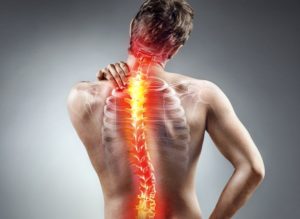
What is Scoliosis?
When there is a curve in the back, one of the forms that it takes is the condition that we call Scoliosis. The spine begins to curve, and when you look at it from the backside, what you’ll see is a letter.
The S Curve
It’s in the shape of an “S” at its most severe. And it’s also called kyphosis, which is when the curve attacks the middle of the spine. If the curve goes all the way from the neck to the lower back, it can be called Lordosis.
The Myth
The myth is not that scoliosis is a reality, but rather what causes it. Many believe that incorrect posture is the culprit. However, there is also no evidence that keeping a straight spine will prevent it from necessarily developing a curve.
Here is a case where many are confusing cause and effect. Just because many people who develop the irregularity go about with bad posture, doesn’t mean it’s the bad posture that is causing the abnormality.
The Common Forms of Scoliosis
Part of the reason we can see this is because many of the victims of scoliosis are young. If it was true that the condition was caused by years of improper bending, it would only be older people affected.
Approximately 2-3% of children under 16 years old are victims, and for them there is rarely a notable cause. It is on very minor occurrences visible at birth, but usually in tandem with other defects.
Early detection is important, because that can help slow the acceleration of the condition.
When is a Curve Okay?
Most of the time, scoliosis is mild. How often? In about 90% of the people who have it. This mildness is such that these people don’t even need physical therapy – only the watching of the curve to make sure it doesn’t become more acute.
Intervention
In more demanding cases, braces and outside instruments can be used to check the curve, and help the back strengthen and align itself with less of a curve. This is a complicated area, and depends on a variety of factors including the maturity of the bones, gender and age.
What Doesn’t Prevent Scoliosis
It’s a myth that you can prevent scoliosis by sitting up straight. What that does is give you good posture, increased health and a strengthened back that won’t hurt. However, to think that sitting up straight is a preventative for scoliosis is a consideration based on seeming common sense – but not fact.
Posture
That being said, it’s a great thing to have great posture. And it isn’t a myth that strengthening your back will help augment any work your chiropractor is doing. The two go hand in hand.
Osteoporosis
Another condition that can be uttered in the same breath as scoliosis is osteoporosis. This occurs when bones become brittle, and enhances the risk of fracture during an accident or injury. The parts of the body this usually affects are the hip and the wrist, because these are easily damaged during a fall – especially in elderly people.
The condition can lead to scoliosis, and a curve known as “dowager’s hump”, which affects older women.
The conditions that cause this are often genetic, but may also include what one eats, smoking and drinking, a lack of calcium or an excess of thyroid medicine.
Real Prevention
The same techniques that help people to avoid osteoporosis, will help them steer more clear of scoliosis. In general these are the methods that you can use to guard your spine. Calcium, vitamin D, and exercise that increases the stress on your bones all help alleviate the symptoms of osteoporosis.
